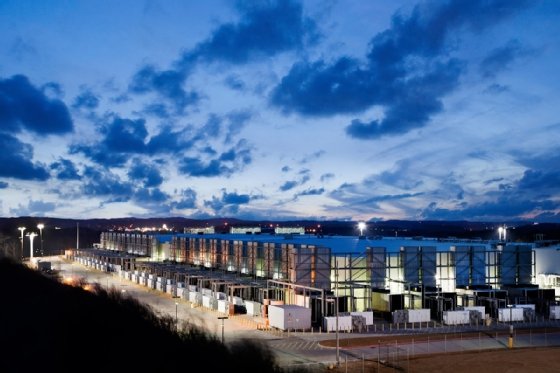Data center temperature and humidity guidelines
ASHRAE maintains a recommended list of humidity and temperature level standards for data centers. Discover which range of guidelines is best for each equipment class.
Maintaining the proper temperature and humidity levels in a data center is critical for any organization with an on-premises IT environment. Data center hardware is designed to operate within specific temperature and humidity ranges; exceeding these can potentially damage equipment and even void its warranty.
In 2004, the American Society of Heating, Refrigerating and Air-Conditioning Engineers (ASHRAE) began maintaining a list of humidity and temperature level standards for data centers. Adhering to these standards can help an organization ensure the longevity of its hardware.
ASHRAE equipment classes
Before delving into ASHRAE's temperature and humidity recommendations, it's important to understand that they vary based on the types of equipment installed. ASHRAE defines four primary classes of data center equipment: A1, A2, A3 and A4.
A1 class equipment, which includes most enterprise servers and storage hardware, has the strictest temperature and humidity requirements. Requirements become progressively less stringent for A2, A3 and A4 class equipment. Most data center hardware is classified as A1 or A2, while A3 and A4 are more closely tied to workstation hardware and PCs.
ASHRAE provides two different metrics for each equipment class: recommended and allowable. The recommended temperature and humidity range is what ASHRAE considers to be optimal for the equipment in question. The allowable metric is essentially a broad range within which the equipment can be expected to function properly.
What is the recommended temperature for data centers?
ASHRAE's "2021 Equipment Thermal Guidelines for Data Processing Environments" provides temperature guidance for the A1 through A4 classes of hardware.
According to ASHRAE, the recommended temperature range for A1 to A4 class hardware is 18 to 27 degrees C (64.4 to 80.6 degrees F). This metric is based on dry-bulb temperature, which is essentially the ambient temperature of the air surrounding the equipment.
Keep in mind that this range is a recommendation, and no governing body enforces these temperature ranges as a matter of regulation.
Although the recommended temperature range is identical for all four classes of data center hardware, the allowable temperature varies by equipment class. For example, according to ASHRAE's guidance, the allowable temperature for an A1 device is from 15 to 32 degrees C (59 to 89.6 degrees F), whereas the allowable range for a Class A4 device is 5 to 45 degrees C (41 to 113 degrees F).
ASHRAE has also created three additional classes of equipment, including B, C and H1. Class B has an allowable temperature range of 5 to 35 degrees C (41 to 95 degrees F), while Class C has an allowable range of 5 to 40 degrees C (41 to 104 degrees F).
The recommended H1 temperature is 18 to 22 degrees C (64.4 to 71.6 degrees F). The allowable temperature is 15 to 25 degrees C (59 to 77 degrees F).
Classes of equipment
- Class A1. Data centers with stringent temperature and humidity requirements.
- Class A2, A3 and A4. An IT space with less stringent temperature and humidity controls.
- Class B. IT equipment rooms, offices and homes with minimal temperature and humidity controls.
- Class C. Point-of-sale, factory and light industrial environments with minimal heating and ventilation that may require ruggedized equipment.
- Class H. A zone within a data center designed to accommodate high-density hardware -- such zones are often cooled to lower temperatures
There is a significant difference between the recommended and allowable temperature ranges. Most data centers maintain a cooler operating temperature. Although it can be theoretically allowable for Class A1 to operate at temperatures as high as 32 degrees C (89.6 degrees F), keeping server rooms at such high temperatures is generally frowned upon. Few, if any, real-world data centers are kept so warm.
What is the recommended humidity for data centers?
As was the case for air temperature, ASHRAE provides both recommended and allowable metrics for data center humidity. In each case, ASHRAE provides guidance for both the relative humidity -- the amount of moisture in the air -- and the dew point or temperature at which water vapor turns to liquid, assuming a constant air pressure is maintained. ASHRAE's recommendations assume a change rate of no more than 5 degrees C (41 degrees F) per 20-hour period and must be adjusted for elevation. ASHRAE's metrics are based on an elevation of 3,050 meters (10,006.56 feet).
The recommended humidity for A1 to A4 equipment is a dew point temperature range of -9 to 15 degrees C (15.8 to 59 degrees F), with relative humidity ranging from 50% to 70%.
Allowable humidity ranges from a minimum dew point of -12 degrees C (10.4 degrees F) to a maximum dew point of 17 degrees C (62.6 degrees F) for A1 to -12 (10.4 degrees F) to 24 degrees C (75.2 degrees F) for A4. The relative humidity level ranges from 8% to 80% for Class A1 and from 8% to 90% for Class A4.

How to monitor the temperature and humidity of data centers
There are countless devices available to monitor temperature and humidity. However, data center operators should work with their cooling system manufacturer to find a monitoring system that can integrate with the systems and adjust as necessary.
Temperature regulation works similarly to any other climate-controlled environment. A thermostat monitors the air temperature and adjusts the cooling system accordingly. Some server racks include built-in thermometers that can help organizations check ambient temperatures at a glance.
Regulating the humidity in a server room can be more difficult. Data centers located in cooler climates often use free cooling, which is the use of outside air to keep the cooling systems from having to work so hard. This makes the data center more energy-efficient. The problem with this approach is that pulling air in from the outside means the humidity level is constantly changing. If the humidity is too high, condensation can occur, potentially shortening the life of various components. Ideally, sensors should detect high humidity levels and divert airflow so that humidity levels remain within the allowable range.
Best practices for meeting data center ASHRAE temperature and humidity standards
Individual data center hardware manufacturers provide their own metrics pertaining to the humidity and temperature levels in which their hardware can operate. Although ASHRAE specifications should be treated as a recommendation, the hardware manufacturer's data should be regarded as a mandate.
Another best practice is to place temperature and humidity sensors throughout the data center to detect any pockets of hot or humid air that might go unnoticed.
Editor's note: This article was updated in 2025 to include descriptions of ASHRAE's equipment classes and to improve the reader experience.
Brien Posey is a former 22-time Microsoft MVP and a commercial astronaut candidate. In his more than 30 years in IT, he has served as a lead network engineer for the U.S. Department of Defense and a network administrator for some of the largest insurance companies in America.






